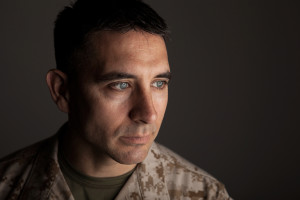
Heightened fear responses occur in certain areas of the brain in people with post-traumatic stress disorder (PTSD), a new study reports.
The research included 67 U.S. military veterans who served in Iraq or Afghanistan after Sept. 11, 2001. All had been involved in traumatic events, and 32 of the veterans had been diagnosed with PTSD.
The veterans underwent a series of tests, and had MRI brain scans during those tests. The tests revealed that veterans with PTSD had heightened activity in certain brain regions when shown images only vaguely similar to the event that triggered their PTSD.
For example, the researchers saw heightened activity in an area called the visual cortex. This is significant because, along with visual processing, that area of the brain also assesses threats, study leader Dr. Rajendra Morey, associate professor in the department of psychiatry and behavioral sciences at Duke University, said in a school news release.
Another area that was activated in vets with PTSD is a region that triggers the release of adrenaline in response to stress or serious threats, added Morey, who’s also director of the neuroimaging lab at the Durham VA Medical Center, in North Carolina.
These findings may lead to new ways to treat PTSD, according to the researchers.
The study was published in the journal Translational Psychiatry.
“We know that PTSD patients tend to generalize their fear in response to cues that merely resemble the feared object but are still distinct from it,” Morey said.
“This generalization process leads to a proliferation of symptoms over time as patients generalize to a variety of new triggers. Our research maps this in the brain, identifying the regions of the brain involved with these behavioral changes,” he said.
Morey said current therapies for a fear condition repeatedly use the same cues to trigger the initial trauma. “But, (this therapy) might be enhanced by including cues that resemble, but are not identical to, cues in the original trauma,” he said.
 /a>
/a>
 /a>
/a>
 /a>
/a>